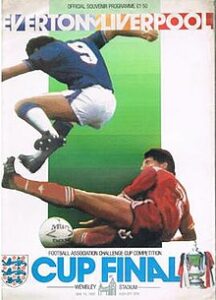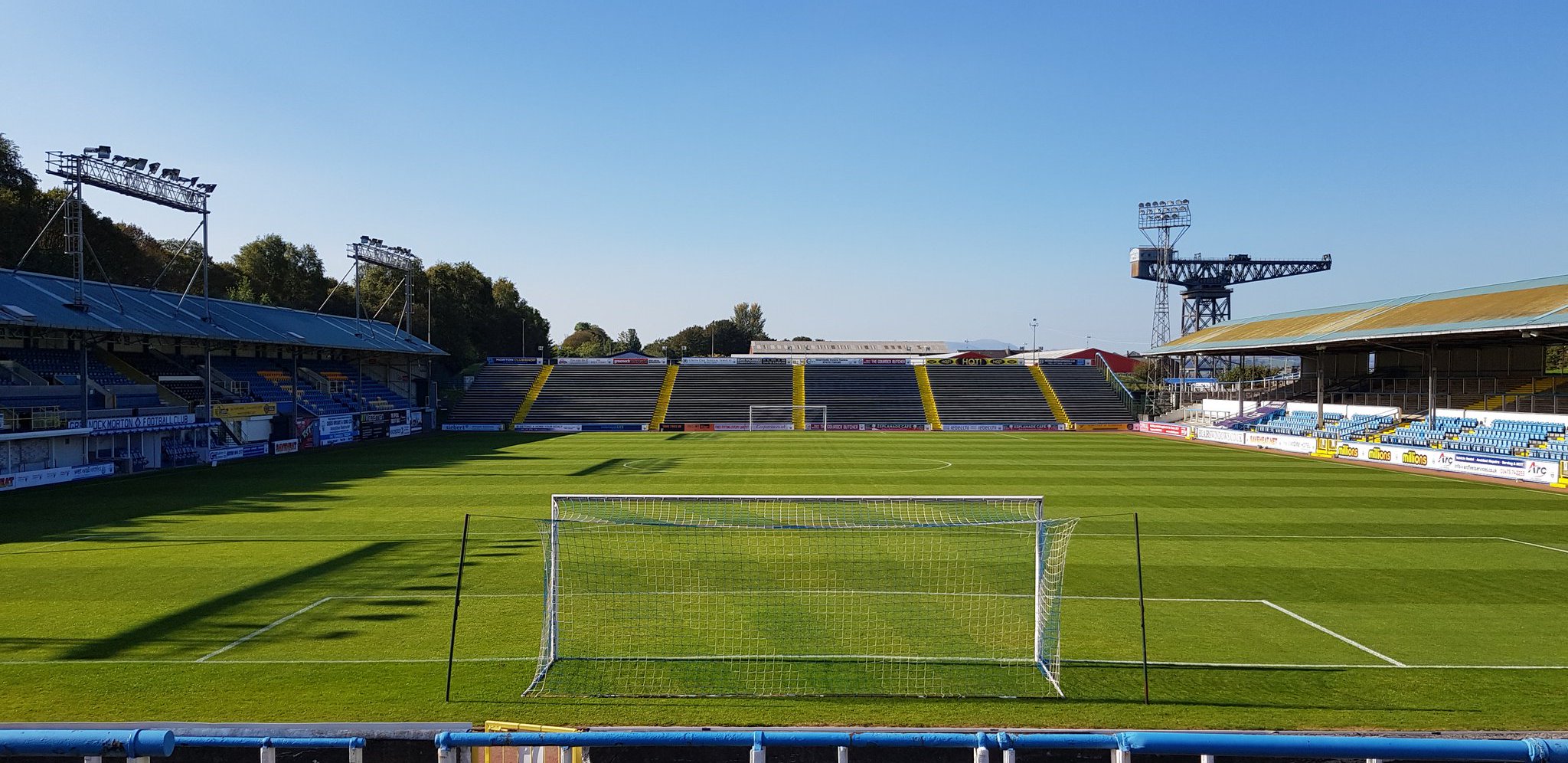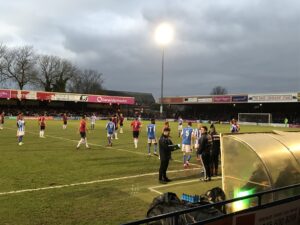Interview with Mike Bayly author of British Football’s Greatest Grounds: One Hundred Must-See Football Venues
Mike Bayly describes himself on his Twitter profile (@Mike_Bayly) as, “History enthusiast. Contributor to @wsc_magazine Amateur photographer and writer. Quirky ground lover.” And all these attributes have been brought together in his latest project, British Football’s Greatest Grounds: One Hundred Must-See Football Venues. Following the publication of the book which has received much critical acclaim, FBR caught up with the author.

Football Book Reviews (FBR): Can you tell us what were your first football memories?
Mike Bayly (MB): Like most children, I played football at school and in parks as soon as I was old enough to kick a ball. The first televised game I clearly remember watching was the 1986 FA Cup Final between Liverpool and Everton, followed by my first major tournament, Mexico ‘86, shortly afterwards. In 1987, I attended my first live game, seeing Hereford United beat Hartlepool United 4-0 at Edgar Street in the old Division Four. Football quickly became an obsession after that, and I was never happier than when pouring after the results and tables in the ‘Sports Argus’, the local results newspaper for the West Midlands.
FBR: Do you have a team you specifically support?
MB: Growing up in the West Midlands, I occasionally watched Hereford United and Shrewsbury Town, but Kidderminster Harriers were my first love. Harriers were then a very successful non-League side, winning the 1986-87 FA Trophy. I spent many happy years at Aggborough and still have a framed photo from when I was mascot against Maidstone United in 1988.
When I moved to Sheffield for university in 1994, it was much harder to attend games and I lost touch with the club. While it may be anathema to most fans, I tend to gravitate towards clubs where I live, and as a resident of the Steel City, would probably describe myself as a fan of local football than of a specific team. While I consider myself a casual follower of Sheffield Wednesday, the club I probably watch more than any other is Hallam FC of the Northern Counties East League, albeit only a few times a season. Most Saturdays I tend to be out photographing random grounds and have long passed the point where I can claim a specific allegiance.
 FBR: Changing Ends: A Season in Non-League Football was your first football book. What was the driving force for writing it?
FBR: Changing Ends: A Season in Non-League Football was your first football book. What was the driving force for writing it?
MB: During the first decade of the 2000s, I grew increasingly disillusioned with football and hadn’t watched a non-League game in years. For reasons I don’t entirely recall, I attended what was effectively the Conference South title decider between Hampton & Richmond Borough and AFC Wimbledon in April 2009. It was a fantastic experience and made me question whether the charge that football had ‘lost its soul’ could be so readily applied to non-League football. I decided to spend the 2009-10 season watching different non-League clubs, interviewing fans and committee members for their take on the modern game. This included trips to London APSA, a leading Asian club, and the fan-owned AFC Liverpool. It was through this journey I rediscovered my love of football and became aware of the invaluable and unsung work volunteers do, who, in my opinion, are the real heroes of our national game.
FBR: Do you think this book has even more relevance today?
MB: In some respects, yes. Professional football has become even more commercialised and expensive to watch in the last decade and will presumably continue on a similar trajectory. There have long been examples of fans finding refuge in the non-League game as it offers an affordable and more traditional matchday experience. Interestingly, a by-product of the pandemic is that fans desperate for live football have turned out in record numbers at non-League grounds. Here in Sheffield, interest in Hallam FC spiked prior to the latest lockdown. For a league game against Brigg Town, the Covid-restricted ticket allocation of 150 sold out in two minutes.
A number of those attending would ordinarily be watching Sheffield Wednesday or Sheffield United, and it would be naïve to assume ticket demand will remain the same once things return to normal. However, it is interesting to note that many fans watching non-League football for the first time loved the experience and vowed to continue doing so even when restrictions lift. At places like Hallam, you can watch the game and have a couple of pints for £10. The quality of football might not be the same as in the Football League or Premier League, but as an overall experience I suspect it will remain highly appealing in a financially uncertain post-Covid world.
 FBR: What is the inspiration for your latest book, British Football’s Greatest Grounds: One Hundred Must-See Football Venues?
FBR: What is the inspiration for your latest book, British Football’s Greatest Grounds: One Hundred Must-See Football Venues?
There were two main reasons I decided to write the book after the idea came to me in 2013.
Firstly, I’ve always enjoyed visiting new grounds, but, as I’m sure is the case with a lot of people, social and work commitments can restrict opportunities to do so. There were numerous ground guides available in print and on the internet, but, to the best of my knowledge, nothing that provided a shortlist of our must-see venues. Providing some guidance or suggestions in the form of a ‘bucket list’ might be useful for those fans with limited free time who wanted to be more selective with their football trips.
And secondly, I thought it would be a fun and rewarding project to carry out. Which it certainly proved to be.
FBR: Do you have a favourite ground and why?
MB: Like music albums, I think my choice of favourite ground changes with my mood or interest at a given time. However, there are three grounds that will always occupy a place near the top:

- Cappielow (Greenock Morton) – A timeless football ground with old stands, large open terracing, evocative floodlights and an industrial titan crane for backdrop.
- Bellslea Park (Fraserburgh) – The 1920s main stand. The imposing Victorian church behind the ground. The harbour views. Quite wonderful.
- Cadbury Recreation Ground (Cadbury Athletic) – Part of the Bournville Model Village laid out by the Cadbury brothers in the late 19th/early 20th century. Complete with Edwardian Pavilion, the Cadbury Recreation Ground is in Birmingham but not of it. A utopian place to watch football.
FBR: Do you think the unique grounds will survive or is there an inevitability about standardisation where clubs are in the football pyramid?
MB: The football ground landscape in Britain has changed behind recognition in the past 30 years. I suspect there are five man drivers for this.
- The recommendations laid out in the Taylor Report that compelled many professional clubs to upgrade their ageing grounds to all-seater and improve safety.
- The increased cost of competing at the highest level, resulting in numerous out-of-town ground relocations. Some ground moves are made from necessity (Shrewsbury Town relocated from the beautiful Gay Meadow partly because of constant flooding) but other new builds appear to be driven solely by the desire to capitalise on land value and/or increase revenue.
- The desire to replace old structures with newer, more comfortable facilities that enable other revenue streams such as bars, hotels or conference suites.
- More stringent ground grading standards in the non-league pyramid (I reference this specifically in the last part of the Richmond Town section of my latest book)
- Greater fluidity in the non-League pyramid (not least automatic promotion to the Football League and play-off places in the tiers below) resulting in a greater number of aspirational clubs replacing older structures or moving to new facilities.

Taking this as a whole, I fear it is a case of when, not if, our oldest or most unique grounds will cease to exist. The Boleyn Ground, Griffin Park and Bootham Crescent have been lost in the last few years and based on current planning discussions, it’s only a matter of time before places like Goodison Park (Everton) or the Pilot Field (Hastings United) go the same way. Many other sacred venues have been the subject of relocation talk in the last decade. The fate of football grounds rests as much on the attitude and ambition of incumbent owners as anything else. I do worry that in the twilight of my life, ‘British Football’s Greatest Grounds’ will be more a document of what was, than what is.
FBR: How do you think COVID will shape football going forward?
MB: I think it’s very difficult to tell at present. Reduced capacity at stadiums could be in place until late 2021 or even 2022. In this eventuality, some fans might have gone 18-24 months without watching their clubs live. I imagine the vast majority of supporters will be desperate to watch their club play again, regardless of the wait. However, it’s more than feasible that some will drift away or find themselves in the habit of watching non-League football, assuming restrictions are lifted earlier that those in the Premier League or Football League. As for Covid’s impact on the actual ground layout or design, I don’t know. Making predictions on anything right now can be a fallacious exercise.
FBR: Many thanks for your time Mike. Good luck with the book!